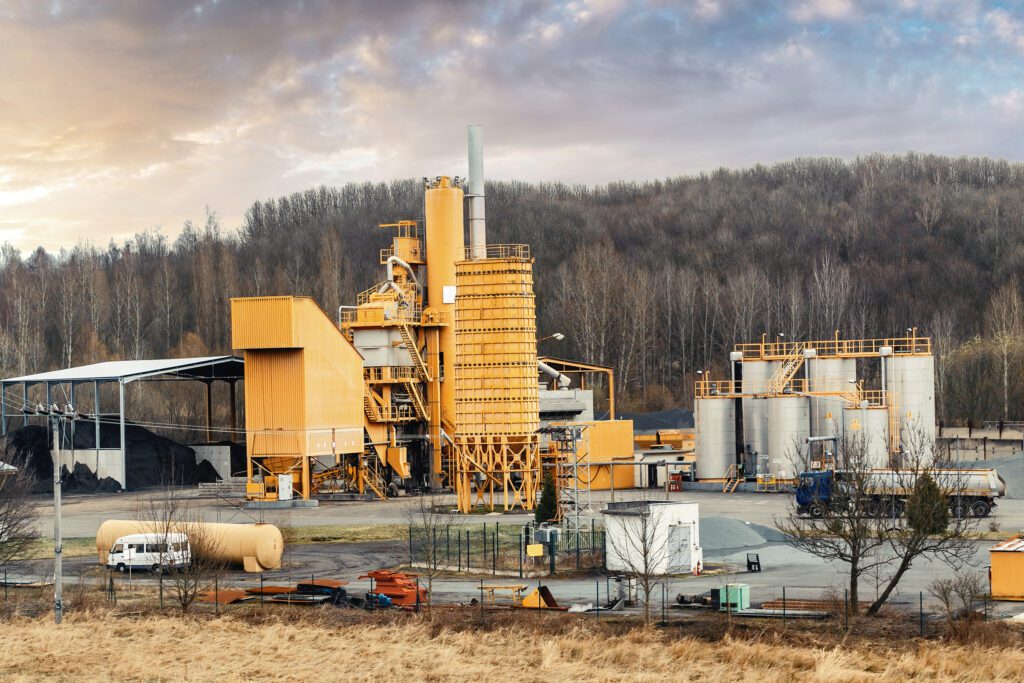Treating Asphalt Odors with Plant-Based Neutralizers
By Dr. Laura Haupert

In recent years, asphalt binder feedstock variation has noticeably increased in conjunction with the rise of so-called “opportunity crudes,” making consistent odor control more challenging in the
asphalt manufacturing sector.
Maintaining neighborly relations and curtailing odor complaints before they arise is just as important as maximizing production for every company’s long-term business continuity.
Left unaddressed, malodors and complaints can even lead to regulatory action. My article in the June 2024 issue of AsphaltPro, titled “Solve Asphalt Plant Odor Issues,” explains how Ecosorb helps manufacturers mitigate these potential issues by providing specially formulated additives for their blends.
Odor challenges
Asphalt mixes can vary significantly depending on the oil sources available and how they are processed, so odor-combatting additives must adapt to the changing constituents of each season’s mixes. Operation temperatures, geography, humidity, wind, and proximity to neighbors also factor into a complete odor mitigation assessment.
There are many opportunities for odorous volatile organic compounds (VOCs) to escape during the asphalt lifecycle—notably during bulk asphalt storage in heated tanks, in stack emissions during production, and while moving asphalt from one vessel to another. VOC concentrations also increase with higher temperature, with more surface area exposure to air, and during agitation of asphalt-coated aggregates.
Specialized plant-based odor neutralizers
Despite the variability inherit in asphalt production, Ecosorb’s comprehensively curated odor control formulations are effective for odor abatement in a variety of asphalt mixes. However, some applications require custom blends.
In these cases, asphalt samples are collected from various stages of production and analyzed using gas chromatography mass spectrometry to determine the precise molecular makeup of odors.

Our scientists then develop a formulation of plant oils, biobased surfactants, and water to molecularly neutralize odors when combined with the asphalt mix. The resulting additive is effective, cost-efficient, non-toxic, and biodegradable, and it can be applied during any phase of the asphalt lifecycle, including manufacturing, storage, transport, and use.
Odor control success in asphalt plant
One longtime Ecosorb end-user customer—a new and reclaimed asphalt pavement plant producing 1,500-2,000 tons of hot mix asphalt each day for contractors and construction firms—relied on a basic odor-mitigating additive for years. However, recent asphalt mix variability spurred the need for a specially targeted formulation.
The plant sent in samples of three different mixes to Ecosorb for assessment of hydrogen sulfide, mercaptan, and general hydrocarbon levels. Though the levels varied in each mix, our scientists formulated a single blend to effectively neutralize odors in all three mixes, reducing airborne sulfurous releases by over 90%!
Table 1: Example of Odor Neutralization at an Asphalt Plant
| Odorous Gas | Detection Range | Level Before Treatment | Level After Treatment |
| Hydrogen Sulfide | 1 – 200 | 4 | Below detectible level |
| Mercaptans | 0.5 – 10 | 1 | Below detectible level |
| General Hydrocarbons | 50 – 1400 | 150 | Below detectible level |
Effective odor mitigation
Plant-based odor removers are safe, effective, environmentally friendly, and cost-efficient. These additives free asphalt manufacturers to focus their attention on plant productivity and the challenges posed by evolving feedstocks.
If your plant is struggling with overwhelming odors and/or strained neighborhood relations, contact our team today – we’re ready to help!






